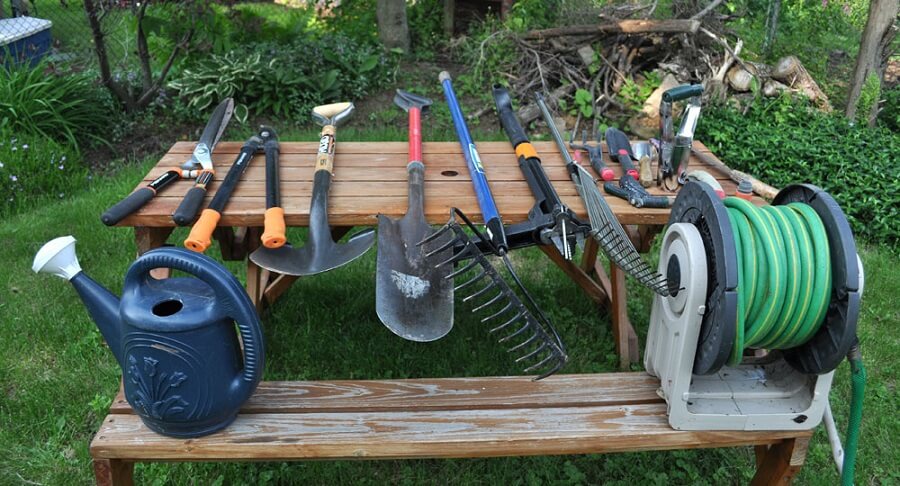If you’ve ever noticed spider webs on your lawn, especially when the grass is damp with morning dew, it could be a symptom of a bigger problem. Spider webs can indicate the presence of dollar spot fungus, a common lawn disease that can cause brown spots to form and spread throughout your yard. But don’t fret! With proper lawn maintenance and a few simple steps, you can effectively remove spider webs and keep your grass healthy and vibrant.
Dollar spot fungus is often caused by several factors, including inadequate nitrogen levels, drought, overwatering, improper mowing height, heavy thatch, and poor aeration. To combat this fungus and prevent the formation of spider webs, it’s crucial to establish a regular lawn maintenance routine.
First and foremost, make sure your lawn is well-fed. Regular fertilization with nitrogen-rich products can provide the nutrients your grass needs to withstand fungal infections. Additionally, proper watering practices are essential. Avoid overwatering, as excessively moist conditions can promote the growth of fungi. Aim for deep, infrequent watering to encourage deep root growth and enhance your lawn’s overall health.
One of the key steps in removing spider webs is to address any excessive thatch buildup. Thatch is a layer of dead grass, roots, and other organic debris that accumulates on the surface of the soil. Too much thatch can create a favorable environment for fungal growth and insect infestations. Dethatching your lawn on a regular basis can help prevent these issues and reduce the presence of spider webs.
It’s worth mentioning that not all spiders found on your lawn are harmful or need to be eliminated. Grass spiders, for instance, are beneficial because they prey on insects that feed on your grass. Their cone-shaped webs can often be found in sheltered spots within the grass. These spiders are not poisonous and only bite when threatened. So, if you come across grass spiders while removing spider webs, you can simply let them be and allow them to contribute to natural pest control.
By following these lawn maintenance tips, you can create a vibrant and spider-web-free lawn. In the next sections, we’ll provide you with specific tips on how to remove spider webs in grass and how to deal with grass spiders in and around your home.
How to Remove Spider Webs in Grass: Tips for Lawn Maintenance
If you have noticed spider webs in your grass, don’t worry! With a few simple lawn maintenance techniques, you can effectively remove spider webs and keep them from coming back. Here are some tips to help you get started:
- Regularly mow your lawn: Regular mowing not only keeps your grass looking tidy but also helps prevent grass spiders from building large nests. By maintaining a shorter grass height, you create an environment that is less attractive to spiders.
- Trim vegetation: Spider webs often appear in areas with overgrown vegetation. By trimming bushes, hedges, and other plants around your lawn, you can reduce spider habitats. This will make your yard less appealing to spiders and discourage them from spinning their webs.
- Clean up food spills: Insects are attracted to food spills, and where there are insects, there may be spiders. By promptly cleaning up any food spills or crumbs on your lawn, you can eliminate a food source for spiders and reduce their presence.
- Eliminate brush piles: Brush piles provide shelter for insects, which in turn attract spiders. Removing these brush piles from your yard will discourage both insects and spiders from taking up residence in your lawn.
- Remove spider webs: If you already have spider webs in your grass, you can remove them with a broom. Gently sweep the broom over the webs to break them up and discourage spiders from rebuilding their webs in the same area. Remember to be cautious and avoid touching the spiders.
- Consider professional pest control: For persistent spider problems, you may want to seek the help of professional pest control experts. They can use barrier sprays and targeted web removal techniques to control grass spider populations in your lawn effectively.
By following these lawn maintenance tips, you can keep your grass free from spider webs and create a space that is less inviting for spiders to spin their webs. Now let’s explore further strategies to deal with grass spiders that may enter your home…
Getting Rid of Grass Spiders in your Home
Having grass spiders in your house can be unsettling, but with the right strategies, you can eliminate them effectively. These eight-legged creatures often enter our homes in search of warmth during the fall season.
To start, regular cleaning is essential. Make sure to vacuum frequently, paying attention to areas where grass spiders may build their webs. By removing webs and cleaning up any potential hiding spots, you can discourage grass spiders from making themselves at home.
Another helpful tip is to rethink your lighting choices. Consider using sodium vapor lights or yellow bulbs, as these are less attractive to insects. By reducing the number of insects in your home, you’ll also reduce the presence of spiders.
If you’re dealing with a more significant grass spider infestation, it may be worth considering professional pest control services. Spider control specialists have the expertise and tools to address grass spider issues effectively. They can provide targeted treatments and long-term solutions to keep your home spider-free.
How Can I Safely Remove Silk Worms from Trees Without Harming Them?
To safely remove silk worms in trees, carefully handpick the worms and place them in a bucket of soapy water. Prune any heavily infested branches and dispose of them properly. Avoid using harsh chemical insecticides that could harm the trees and other beneficial insects in the area.










